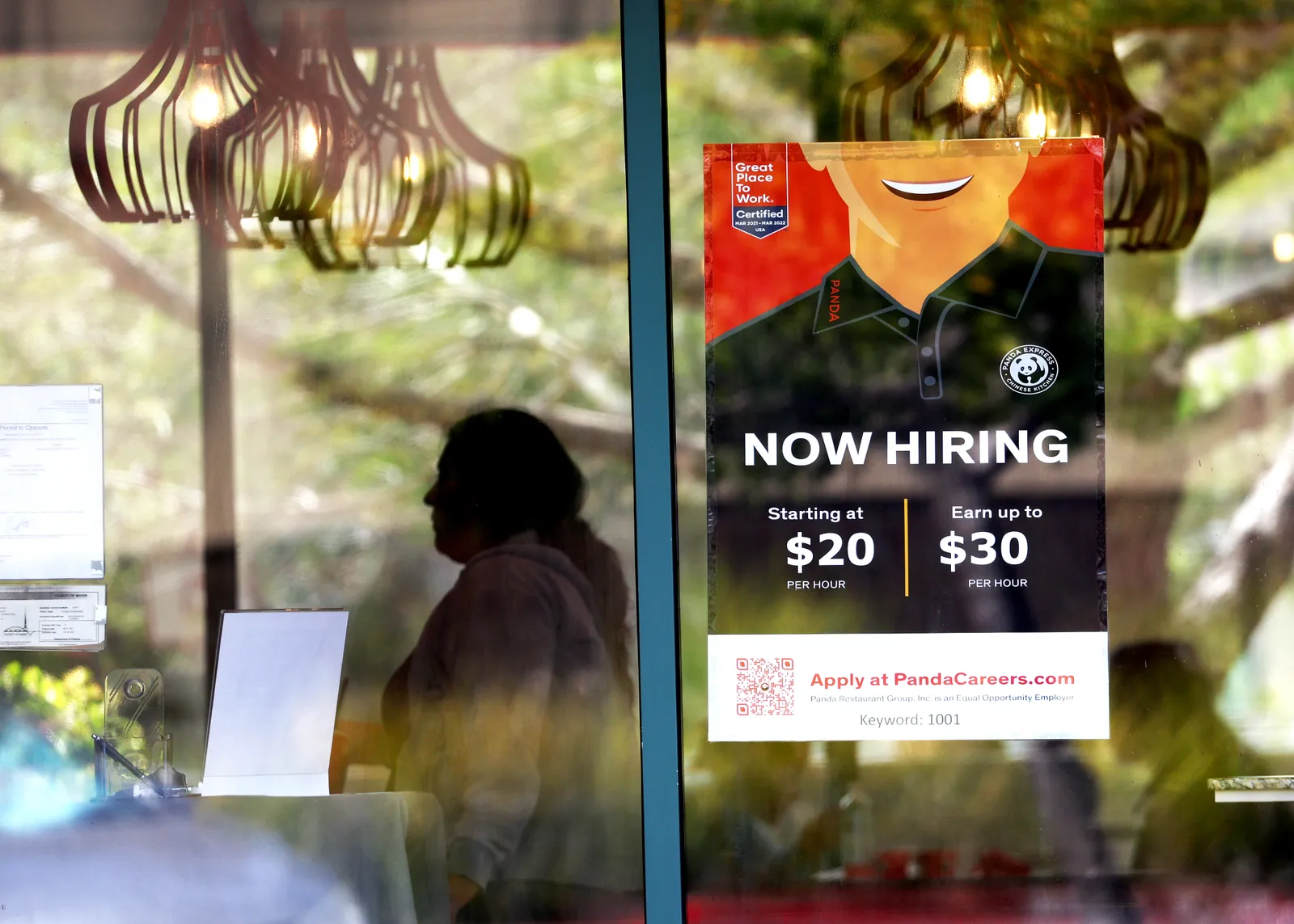More than half a decade ago, the nation’s top workplace civil rights enforcement agency began a high-level examination of how U.S. employers paid their employees, an experiment it said was intended to measure the nation’s level of pay inequity.
The collection, known as the U.S. Equal Employment Opportunity Commission’s 2017 and 2018 EEO-1 Component 2, did not sit well with all constituencies. Employers and management-side legal counsel challenged the effort’s utility, practicality and overall necessity — a debate that may have partly contributed to the one-off nature of the collection, which EEOC did not renew for subsequent years. The White House also changed hands during the commission's planning process for Component 2, and the Trump administration opposed the collection, initiating a stay of it. A federal judge lifted the stay and allowed the collection to take place.
Today, the results of EEOC’s Component 2 collection have been publicly available for months. Published in March, they confirmed what researchers at the time suspected: pay gaps existed in the U.S. workforce in 2017 and 2018 along gender, ethnic and racial lines. Moreover, certain industries and job categories contained especially large disparities between workers of different demographic groups.
The industry-by-industry gender breakdown of the US workforce

EEOC officials have since said they are ready to mount another attempt at pay data collection. The landscape of U.S. labor and employment law has shifted significantly since EEOC’s first, and arguably successful, swing, but sources who spoke to HR Dive believe the agency’s next pay data collection could look meaningfully different from its inaugural effort.
What Component 2 found
In a March 12 press release, EEOC highlighted several of its Component 2 findings. The final analysis included a data dashboard that allows users to compare pay by sex and race to broader averages across industries, job categories and states.
For instance, EEOC found the median pay band for women in 2018 was between $30,600 and $38,900 per year compared to a range of $39,000 and $49,900 for men. The gap had closed slightly since 2017; the median pay band for men was the same between the two years, but the median pay band for women in 2017 was between $24,400 and $30,600.
Similarly, women were in a lower median pay band than men within each race and ethnicity category that EEOC measured. Black or African American women and American Indian or Alaska Native women were in the lowest median pay band of all groups.
HR Dive analysis of the data showed that the top pay bands of every industry measured by EEOC consisted mostly of male workers.
In the accommodation and food services category, for example, 57% of workers in the lowest pay band — $19,239 per year or less — were women in 2018, while 43% were men. Yet, in the top seven pay bands of that industry, men outnumbered women by at least 10 percentage points. The biggest gap occurred at the top pay band — $208,000 per year or more — where about 77%, or more than 2 in 3 workers, were men.
Women were overrepresented in the lowest pay band in many US industries, while men universally outnumbered women in the highest pay band
Even in industries where women far outnumbered men, men dominated the highest pay bands. Take healthcare and social assistance, for example, where women made up 78% of workers in 2018 but only 34% of workers in the highest pay band.
While many of the agency’s findings are not surprising to advocates, they do help shine a light on gaps that exist across virtually every industry measured, said Jessica Stender, policy director and deputy legal director at the nonprofit Equal Rights Advocates. EEOC’s report also may incentivize employers to take more proactive steps to combat race- and sex-based pay disparities, she added.
“That can be an eye-opening experience for many of them,” Stender said of employers that submitted pay data to EEOC. “I think there are many employers that may not be aware of race- or sex-based pay disparities in their companies, and there are a lot of ways in which these disparities are not necessarily intentional.”

A process worth trying again?
After performing its Component 2 collection, EEOC commissioned the National Academies of Sciences, Engineering, and Medicine to produce a study assessing the quality and utility of the data. The National Academies’ report found that Component 2 data were a “potentially valuable resource,” in part because they constitute the sole federal data source for pay data and demographic characteristics collected at the employer level.
EEOC’s data differ from other federal sources of pay information, such as the U.S. Census Bureau, because Component 2 provides insight into the pay at the workplace level, according to Donald Tomaskovic-Devey, professor of sociology at the University of Massachusetts Amherst and a member of the National Academies’ panel that evaluated Component 2.
Census wage figures are gathered via surveys of individuals and connect pay to each individual’s occupation and sector, but not the firms for which they work, Tomaskovic-Devey told HR Dive. Such data are not actionable for HR departments, he added, because they do not allow employers to compare themselves to competitors in the same industry. “If you have data on individuals not connected to firms, there’s no place for the HR person to stand,” Tomaskovic-Devey said.
With EEOC data, however, an HR person can do comparisons of income distribution across race and gender within specific occupations and company types.
Tomaskovic-Devey said EEOC could even have taken its analysis a step further by providing individualized reports to specific firms outlining where they stand on pay equity compared to their top competitors, or by identifying and rewarding highly egalitarian organizations or industries.
“I actually think it would be great if HR or diversity and inclusion staff at large firms asked more of EEOC,” Tomaskovic-Devey said. “In some ways, those two sets of professionals have responsibility for creating equal opportunity, but often not many tools, and [they] have a hard time being strongly metric-driven while the rest of their firms are strongly metric-driven.”
EEOC’s findings also might allow employers with existing pay equity policies to address occupational segregation, which refers to the overrepresentation — particularly of women and people of color — in lower-paying jobs and industries, said Stender. If an organization discovers that these groups are highly concentrated in lower-paying positions, it can chart a course to “ensure better representation of all people and all genders at all levels of the company,” Stender added.

What EEOC could change
Despite the many arguments in support of a second Component 2 collection, employer advocates as well as the National Academies acknowledge that EEOC could take steps to make the collection easier for employers to comply with in future iterations.
For example, the National Academies found evidence that Component 2’s requirement that employers aggregate their pay data into occupational and pay-band categories set by EEOC could be burdensome. The form also tasked respondents with grouping employees into categories based on their annual wages, “but annual wages reflect different hourly wages for individual employees, and it is unclear how hours worked should be apportioned to calculate hourly pay rates,” the National Academies said in their report.
Instead, collecting individual-level data from employers “may be less burdensome,” according to the National Academies report, particularly because this form of analysis would better fit how employers already submit payroll data to state unemployment and state and federal tax systems.
“Any new data collection is difficult, but [Component 2] also doesn’t match [employers’] payroll systems,” Tomaskovic-Devey said. “EEOC should ask firms to do what they’re already doing as opposed to something new that will introduce errors into the data collection.”
A few states began instituting pay data collection requirements in the years since Component 2 ended, including Illinois, which uses employers’ payroll data to complete its analysis.
EEOC could implement similar requirements for its future data collection, and the agency also may allow employers to include information on factors such as employees’ educational attainment and tenure, which were not collected in Component 2.
“If they go to individual-level payroll data, employers should have the power to include whatever data that they think is important, but they should at least be allowed to include tenure with the firm,” Tomaskovic-Devey said.
In EEOC’s notice announcing its intent to bring back pay data collection, the agency said the report's conclusions and recommendations would help inform its approach to future data collections. The commission previously said it planned to propose new pay data collection regulations in January 2025, but an agency official told HR Dive that date will likely be pushed back.

Pay transparency momentum provides support
Like Illinois, California requires certain employers to submit information about their pay and workforce demographics to the state government. Both states are also part of a larger labor and employment trend in favor of pay transparency, having passed laws requiring employers to disclose pay ranges in job posts. In all, jurisdictions in at least 15 states and Washington, D.C., have passed pay transparency laws.
Other jurisdictions are likely to follow in the years ahead, according to Robert Hinckley Jr., managing shareholder at law firm Buchalter, who added that the federal government could even consider a law requiring some kind of pay data collection like Component 2.
“From an employer’s perspective, there’s going to be more and more focus placed on pay disparities,” Hinckley said. “I don’t think wage transparency and wage data being mined from employers is going to go away.”
The momentum around pay transparency is such that some employers have begun to voluntarily publish publicly available pay equity reports, Stender noted. With the growing number of pay transparency laws, she said it is “up to employers to know that the train isn’t stopping” when it comes to regulatory and public focus on the subject.















